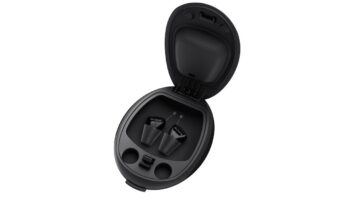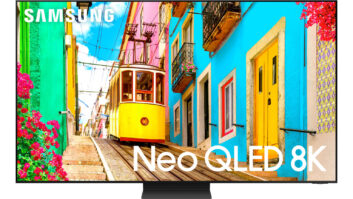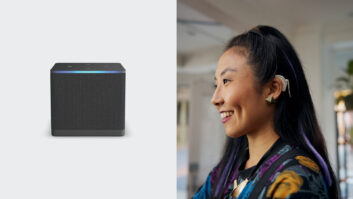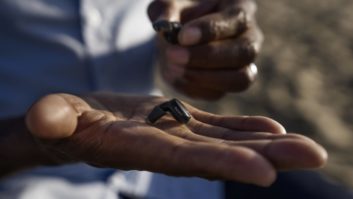
The dirty secret of TV manufacturers is that they don’t care about sound quality. An even darker secret is that consumers don’t seem to mind.
Shoppers buy what looks good, without ever listening to the sound. As one industry expert points out, “Nobody ever walked into Best Buy and said “I’m not going to buy that TV. It doesn’t sound good enough.”
For years TV designers have been in a market-share war, trying to outdo the competition with thinner, sleeker TVs … which simply aren’t big enough to hold good sound systems. The sound systems in most Ultra High Definition TVs – with tiny, downward-facing speakers – do not sound as good as the sound system in a 1952 Philco black-and-white set.
The result? People can’t understand dialog. Forget surround sound, forget powerful subwoofers. Viewers can’t understand what people are saying on TV shows – especially viewers who are over 50 and may have some degree of hearing impairment. And there are lots of them.
Over 95 million U.S. citizens are over 50 … and many of them have some hearing loss.
But people are often reluctant to buy hearing aids because they are perceived to be both expensive and inconvenient – and because wearing hearing aids is not fashionable.
The result is that huge numbers of people are finding it increasingly difficult to understand dialog on television broadcasts. Most flat-screen TVs use very tiny speaker systems aimed downwards, which only adds to the challenge. In fact, TV sound is so bad, even people with hearing aids (or perfect hearing) often have difficulty understanding dialog. (One audiologist’s customer said “My new TV sounded fine until I got hearing aids…now it sounds like crap.”)
The solution? A high-quality TV sound system, preferably one that puts a focus on vocal clarity. For most people a five-speaker surround-sound system is not the answer. Too complicated. Too much clutter. Too expensive.
A good “sound bar”-style home theater system can be a good solution – but most of those lack a center speaker, which is crucial for accurate dialog reproduction.
At ZVOX we have developed a new innovation called AccuVoice. Based on hearing aid technology, AccuVoice uses a combination of dynamic compression and equalization to bring vocals forward, while minimizing the interference of other sounds. Our proprietary technology (patent applied for) senses when dialog is present in a soundtrack and instantly activates the AccuVoice feature, then instantly turns it off when dialog disappears – so interference with non-dialog aspects of a soundtrack is minimized.
The result is sound that allows most hearing impaired people to understand dialog, but does not have a negative effect on the overall sound. So the hearing-impaired and the non-hearing-impaired can listen to the same sound system.
Tom Hannaher is a veteran of Best Buy forerunner Sound of Music; Advent; Cambridge SoundWorks; and Tivoli Audio. In 2003 he founded ZVOX, a Swampscott, Mass.-based manufacturer of simple home theater solutions.













